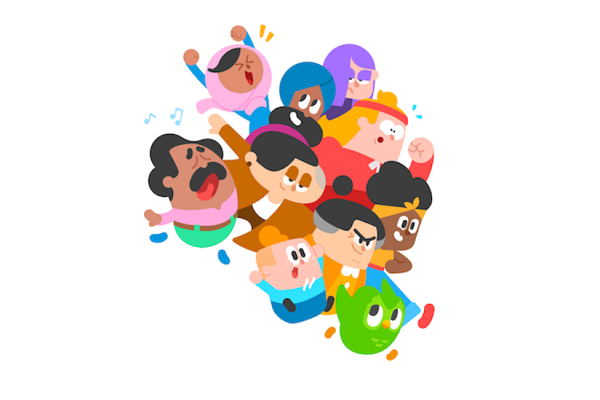Duolingo Adds Custom Characters Voices, Upgrades Voice AI
 Linguistic education app Duolingo has developed a text-to-speech tool to provide the characters who illustrate its lessons with unique voices. Each cartoon character will get a synthetic voice to match the fictional background and personality Duolingo has devised as part of an overall upgrade to the app’s AI and natural language understanding.
Linguistic education app Duolingo has developed a text-to-speech tool to provide the characters who illustrate its lessons with unique voices. Each cartoon character will get a synthetic voice to match the fictional background and personality Duolingo has devised as part of an overall upgrade to the app’s AI and natural language understanding.
Duolingo Personality
Speech recognition and text-to-speech technology have long been the basis of Duolingo’s teaching method, but the voices have not had much in the way of personality, focusing more on diction and enunciation instead. Now, the company has put together a team to create more memorable and distinct voices for its nine animated characters. The custom voices took several months to create, encompassing not just programming an algorithm, but auditioning people to use as the character’s voice. After picking each character’s English language performer, Duolingo looked for similar voices to speak in Spanish, French, German, and Japanese. The emotional and cultural context of each language took some time to sort out, as sometimes the character’s voice needed to change more to work in radically different backgrounds. Currently, all of the characters have an English voice available, and some have Spanish and French voices, with the other languages to follow as they are completed. The characters were popular as silent animations, so Duolingo hopes the unique voices will make learning new languages easier and faster for users.
“After our art team illustrated, animated, and added the characters to the app, we saw a lot of love for them on social media. This enthusiasm motivated us to put even more time into our cast and really flesh them out. We saw an opportunity to make language learning more fun and engaging — and, as a result, build a stronger bond between our learners and Duolingo,” Duolingo’s Emily Chiu, Kevin Lenzo, and Gretchen Swecker explained in a blog post. “In addition to giving our characters more personality, adding these voices will expose learners to a wider variety of voices — an advantage for learning. When you use your new language out in the world, you’ll be interacting with people from different ages, genders, and backgrounds. That’s why hearing a variety of voices in your lessons is so important: it helps you develop flexible listening skills for real-life language situations!”
Synthesized Engagement
Startups that provide tools for creating synthetic voices, like Lovo, Veritone, and Wellsaid, have been raising significant funding from venture capitalists as the tech improves. Companies are finding more ways to implement artificial voices, from promotional videos and website guides to full interactive AI like Duolingo. Val Kilmer, whose illness has left him unable to speak, has begun experimenting with a synthetic version of his own voice. A fan of the videogame Skyrim even demonstrated how he could produce a trailer using only synthetic voices built with an AI tool. Educational apps like Duolingo are a natural fit for applying synthetic voices and improving engagement.
Follow @voicebotai Follow @erichschwartz
Replica Studios Opens Early Access for Integrating Synthetic Voices into Unreal’s MetaHuman Creator
Alexa Introduces Voice Profiles for Kids and New AI Reading Tutor
SoapBox Labs and Amplify Debut Voice-Based Children’s Literacy Assessment








